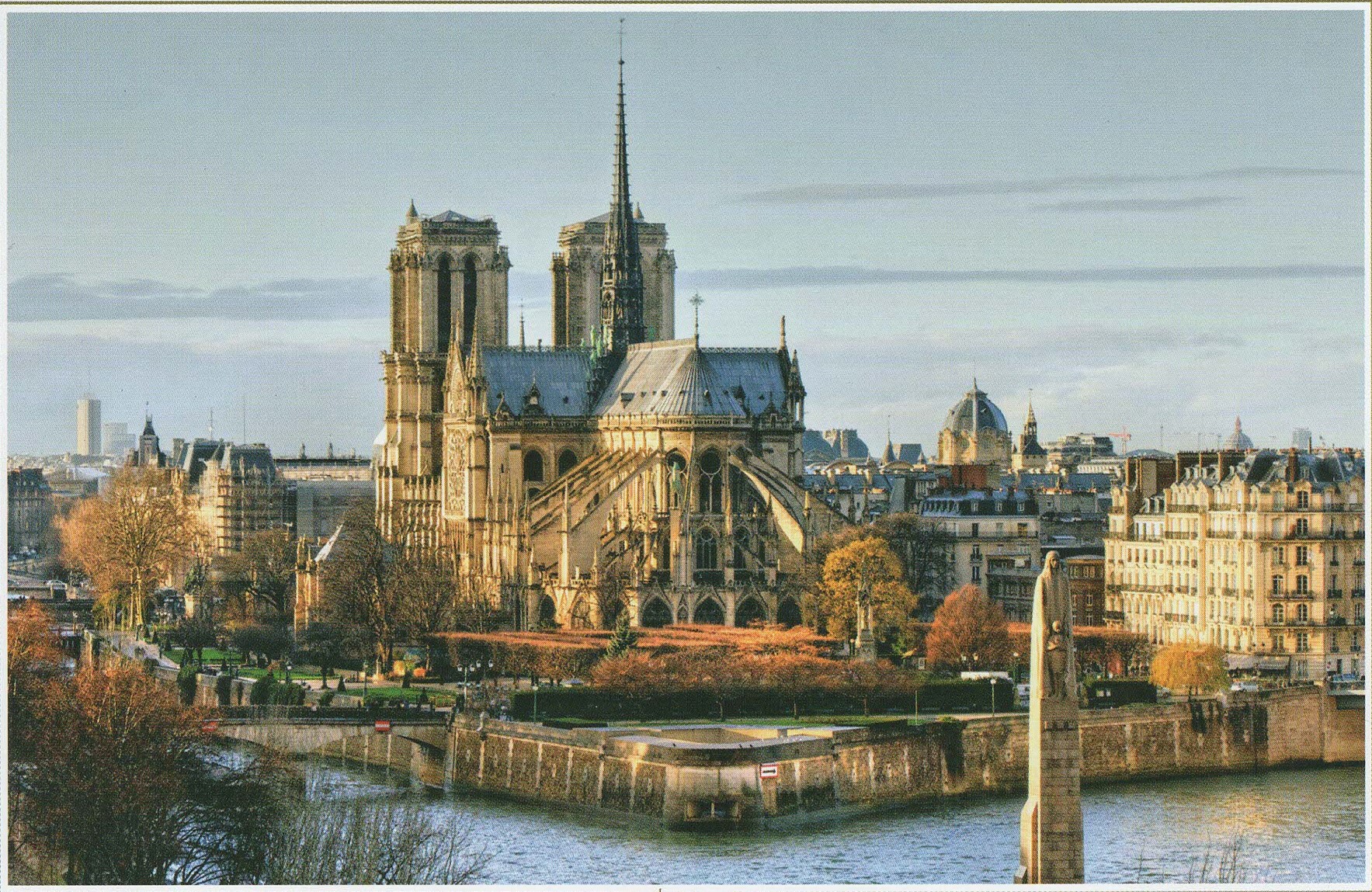A mainly gothic style

A mainly gothic style
The clarity of the composition and the balance of the verticals and horizontals strike all visitors as they approach the cathedral's façade.
The abundance of the sculpted decoration attracts the eye by the verve and quality of the sculptures, whether they are original or from the great restoration work carried out in the 19th century. The interior atmosphere of the cathedral leaves no one indifferent to the monumentality of the space, the roses of the transepts, the votive statuary or the majesty of the great organ. The large paintings in the chapels allow us to understand the essential role of religious painting in the 17th and 18th centuries. The cathedral's treasury contains a number of works of major interest, used in worship. Notre-Dame de Paris is thus a fundamental building, as much for the history of Gothic architecture as for the history of art since the middle ages or the history of restoration in the 19th and 20th centuries. Classified as a historical monument on the 1862 list, it is an integral part of the property 'Paris, banks of the Seine' listed as a World Heritage Site by UNESCO. The classified area includes the major monuments, buildings, gardens, squares and quays that border the Seine, from the Ile Saint-Louis in the east to the Ile aux Cygnes in the west.Read more

A gigantic project of phenomenal scope
A gigantic project of phenomenal scope
The need for a larger, more majestic building was felt, in keeping with the capital of the bishopric and the country, as well as the ambition of the new bishop Maurice de Sully. Thus began one of the longest construction projects that France has ever had to carry out, a project that lasted nearly 200 years, and which required a great deal of technique, organization and time. It required a lot of technique, organization and know-how to achieve this remarkable result.Read more« La tête, le cœur, la moelle de la ville entière. »

Two centuries of technique, architecture and work
In 1163, the first stone of Notre-Dame was laid in the presence of Pope Alexander III.
It is emblematic of the ogival art, also called Gothic art, an innovative style recently used for the construction of churches and cathedrals at the time. The vaulting system is made of ribbed vaults, in order to place the stained glass windows and let the light through. High vault height, to be as close as possible to the sky. Four-story elevation supported by galleries to hold the roof. Numerous buttresses on the outside to counterbalance the thrust of the high vaults.
Several campaigns of work have taken place, so that we can distinguish stages :
- 1163-1225 : construction of the choir and its double ambulatory, the nave, the aisles and the tribunes, elevated facade to the gallery of kings
- 1225-1250 : high gallery and the two towers on the facade, modification and enlargement of the high windows and arrangement of the side chapels of the nave.
Read more

Two centuries of technique, architecture and work
Having undergone the ravages of time and Men, notably with several fires (including one recently).
It was with the return of the monarchy to France that further changes to the Palace took place, including the creation of several new posts and the enlargement of the Palace to cope with the growing number of cases. This work was started in earnest by the July Monarchy, just after the Restoration period. The work was delayed and temporarily halted due to several fires (in particular the multi-fire of 1871), wars and redesigns. The conciergerie was not restored until 1883, and most of the buildings were either abandoned or restored in the following years. Since 1914, we have not had any large-scale restorations like these.Read more






